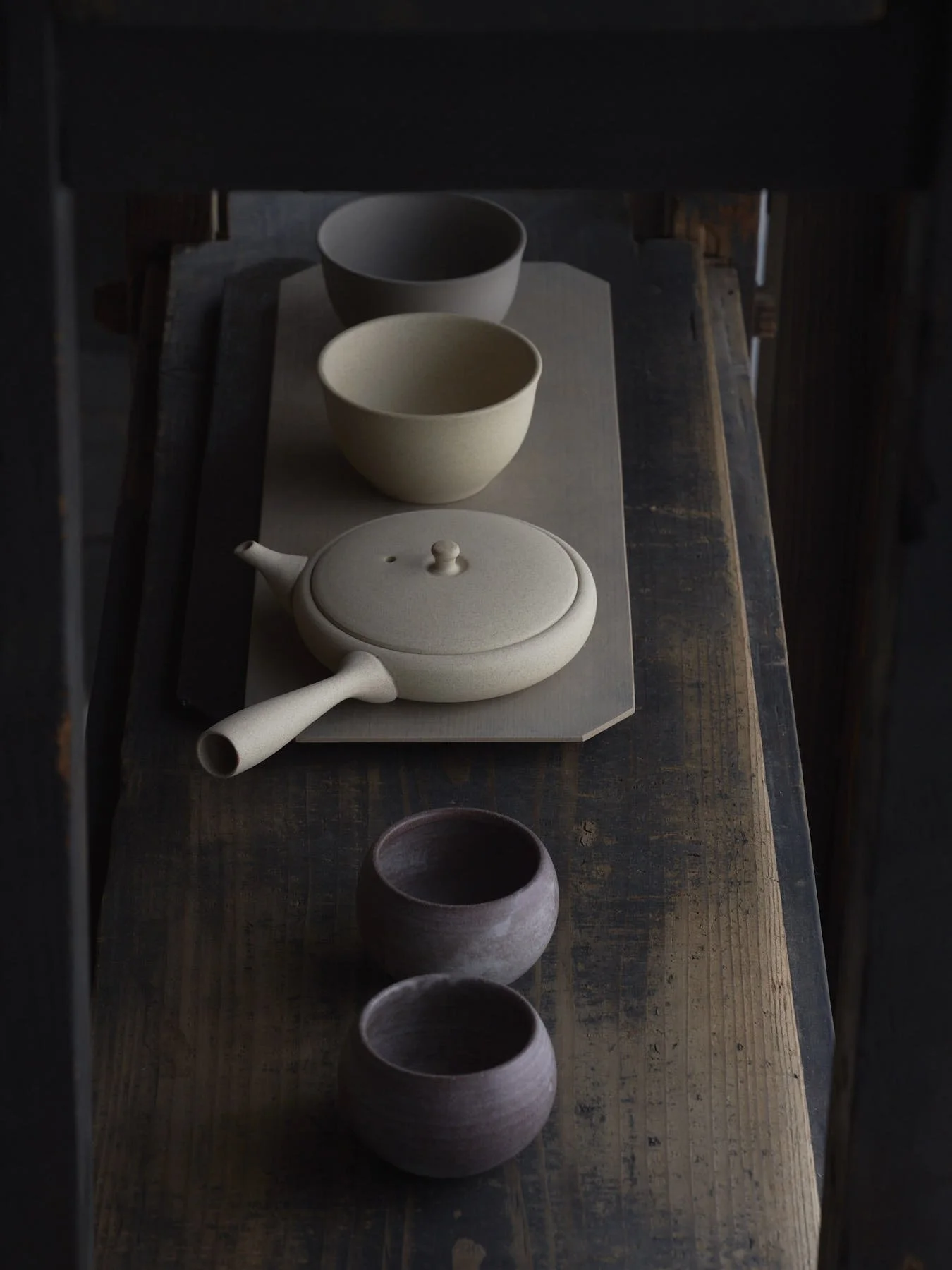
Botanical Teas & Earthen Wall
Occupying a restored machiya in Kyoto's northern precincts, Maana Atelier sits within the city's quietly layered fabric, serving as both residence and working archive.
The machiya, once merchant homes, are modest in scale but generous in flexibility. Their timber frames, earthen walls, and shifting thresholds offer a framework shaped by seasonal shifts and generational use. Rather than erasing time, Maana Atelier works with it.
Established by Irene and Hana as part of the broader Maana project, the atelier extends their long-term engagement with Kyoto's architectural and craft traditions. What began as a hospitality offering has since evolved into a site for experiential learning, where participants are invited to work directly with materials that have shaped the city's built and cultural identity. These workshops do not replicate craft for display but treat it as a living process, grounded in texture, technique, and place.
Botanical Tea
Set apart from Japan's more formal tea traditions, this workshop focuses on pre-Camellia infusions: teas drawn from wild and cultivated herbs native to Japan. Plants are sourced through a network of farmers and foragers who work with biodiversity rather than against it, allowing each blend to speak to the landscape it came from. There is no dominant flavour or fixed profile, only layers of scent and season.
Participants are introduced to a selection of dried herbs, some familiar, others singular to the local microclimate. With guidance, they assemble their own blend, balancing aroma, function, and personal intuition. The process is quiet, tactile, and informed by the rhythms of traditional tea-making not as ceremony, but as daily practice rooted in ecology.
The final product is a small jar of tea, blended by hand, taken home as both a sensory keepsake and an expression of Japan's more-than-human traditions.
Earth Wall
Tsuchikabe, Kyoto's traditional earthen wall finish, sits at the intersection of architecture and agriculture. A mix of clay, straw, sand, and seaweed, the material is fully natural, requiring no synthetic binders and producing no residual waste. It performs as structure and surface: regulating moisture, buffering temperature, and shaping the feel of a room through its tone and tactility.
This workshop functions as a hands-on primer. Participants work directly with raw materials, combining and layering them using techniques adapted from Sakan plasterers. What begins as rough matter slowly becomes form, revealing the physical intelligence embedded in traditional construction.
The outcome is a small-scale wall panel, part craft object, part building element. It doesn't imitate heritage but gestures to it, offering a grounded understanding of how Kyoto's architecture continues to evolve through process, not preservation alone.
Related Content
Office AIO has transformed this traditional noodle house into an atmospheric dining destination that seamlessly blends heritage with contemporary design.
High-tech facial destination pioneer Formula Fig reimagines the modern wellness experience through thoughtfully designed spaces that blur the lines between science and nature.
In the heart of Brisbane's Fortitude Valley, design studio In Addition unveils a new retail destination for luxury luggage brand July.




























